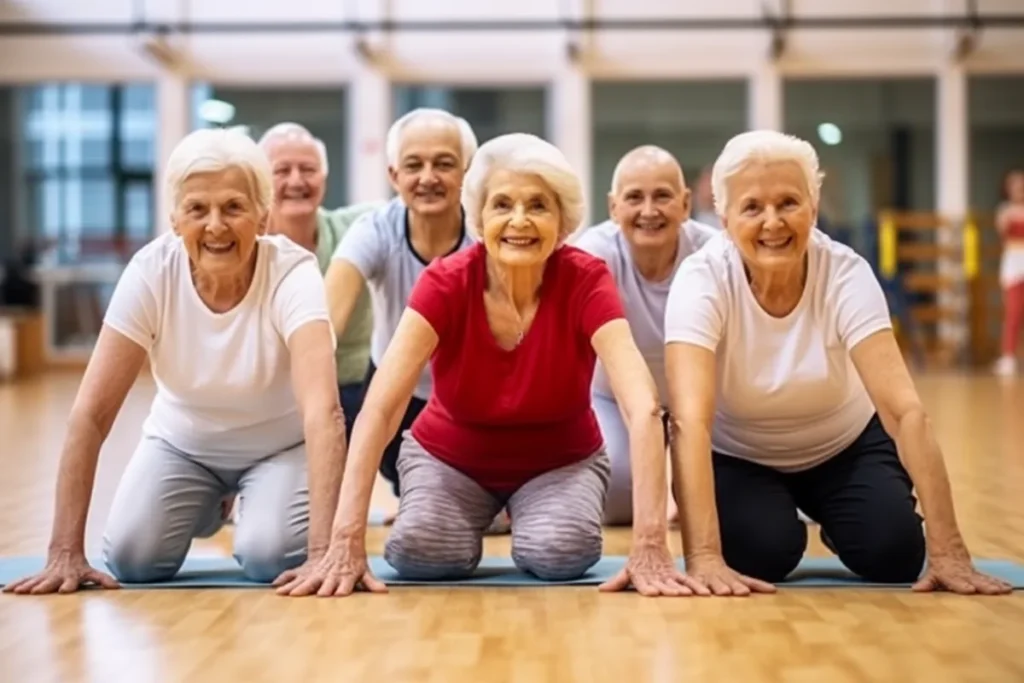Osteoporosis prevention remains a paramount concern for senior citizens, particularly those residing in assisted living facilities. This debilitating disease silently affects around 54 million individuals in the United States alone, often manifesting without any discernible symptoms until an unfortunate fracture occurs.
The insidious nature of osteoporosis lies in its ability to progress unnoticed, eventually causing excruciating pain, reduced mobility, deformities, and diminished height. This unassuming condition has far-reaching implications, significantly affecting the overall quality of life for those it afflicts. In severe cases, fractures triggered by osteoporosis can even lead to life-threatening complications in elderly individuals, who require extended healing periods and face heightened risks during recovery.
At Serenity Living Home Care, the well-being of our senior residents is our utmost priority. We are committed to ensuring that they thrive and enjoy the highest possible quality of life. To achieve this, it is imperative for all adults to comprehend the nuances of osteoporosis and actively engage in its prevention.
Assessing Osteoporosis Risk: Who Is Vulnerable?
While anyone can develop osteoporosis, certain demographic groups are at a higher risk than others. Gender is a crucial factor, with women facing a substantially greater risk. Roughly one in five women will experience osteoporosis, compared to just one in 20 men. White and Asian women are at an even higher risk.
The elevated risk among women is linked to hormonal changes that occur during menopause, leading to decreased bone density. Conversely, men have larger skeletons, providing them with a degree of protection against fractures.
However, osteoporosis is not exclusive to women. Several other risk factors can contribute to its development:
- Family history of osteoporosis or bone fractures.
- Previous bone fractures after the age of 50.
- Underweight or low body mass index.
- Ovarian surgery before natural menopause.
- Smoking or heavy alcohol consumption.
- Prolonged periods of bed rest or inactivity.
- Poor dietary habits lacking in calcium, protein, or vitamin D.
- Long-term use of specific medications, including proton pump inhibitors, corticosteroids, or antiepileptic drugs.
- Hormonal imbalances, such as excessive thyroid hormone or insufficient estrogen.
Age also plays a pivotal role, as the risk of osteoporosis increases with advancing years. While women experience accelerated bone mass loss after menopause, both men and women typically exhibit similar rates of bone loss by the age of 65 or 70.
Detecting Osteoporosis: Do You Have It?
Seniors residing in assisted living facilities may unknowingly harbor osteoporosis until an unexpected fall or impact results in a bone fracture. However, waiting for such incidents is ill-advised. The U.S. Prevention Services Task Force recommends regular osteoporosis screenings for women over the age of 65, as well as those with elevated risk factors.
Screening involves measuring bone density through a specialized scan, yielding a T-score that is then compared to that of a healthy young adult. Individuals with low bone density, though not meeting the criteria for osteoporosis, may be diagnosed with osteopenia—a warning sign that necessitates proactive measures to prevent osteoporosis.
Receiving an osteopenia diagnosis does not guarantee progression to osteoporosis, but it underscores the importance of adopting a healthy lifestyle to mitigate the risk.
Should you experience a seemingly minor bone fracture, it is imperative to consult with a healthcare professional promptly, as it could be indicative of underlying osteoporosis.
Osteoporosis Prevention: Empowering Seniors in Assisted Living
Preventing osteoporosis is feasible through proactive measures that can help preserve bone health. While aging is an inevitable process, adopting a healthy, active lifestyle remains within your control. Senior citizens seeking to safeguard themselves against bone loss should consider the following strategies:
- Prioritize Bone-Nourishing Foods:
- Consume foods rich in calcium, vitamin D, and protein to support bone health.
- Women under 50 should aim for 1,000 mg of daily calcium intake, increasing to 1,200 mg after 51.
- Men should target 1,000 mg daily, escalating to 1,200 mg after the age of 70.
- Embrace an Active Lifestyle:
- Regular exercise helps maintain high bone density.
- Customize a workout regimen suitable for your mobility and health status.
- Seek guidance from your physician to ensure safe and effective exercise routines.
- Assisted living communities often provide senior-friendly workout facilities and group exercise sessions, fostering socialization and fitness.
- Maintain an Ideal Body Weight:
- Consult with your doctor to determine an ideal body weight based on your height and build.
- Balance is key; being underweight may indicate nutritional deficiencies, while excess weight can strain the skeletal system.
- Quit Smoking and Avoid Tobacco:
- Cease smoking if you are a current smoker, and never initiate tobacco use.
- Smoking impedes calcium absorption, lowers vitamin D levels, and increases the risk of bone fractures and delayed healing.
- Consume Alcohol in Moderation:
- Exercise moderation when consuming alcoholic beverages, avoiding excessive or habitual drinking.
- Chronic heavy drinking compromises bone density and impairs bone renewal, making moderation essential.
Is Osteoporosis Treatable?
While there is no cure for osteoporosis, seniors can take proactive steps to prevent its onset or slow its progression. The primary objective is to lead a healthy lifestyle, encompassing a balanced diet and regular exercise. Additionally, seniors diagnosed with osteoporosis may receive medical recommendations, including medications to mitigate bone loss (such as calcitonin, bisphosphonates, estrogen, or RANKL blockers) or drugs to promote bone rebuilding (like synthetic parathyroid hormone).
Assisted living facilities play a pivotal role in supporting senior residents’ health and well-being, providing the resources necessary to take control of their physical and emotional health. By empowering seniors with knowledge and access to preventive measures, we can strive to reduce the impact of osteoporosis and enhance the quality of life for older adults in assisted living
At Serenity Living Home Care, our residents engage in daily activities and follow a carefully crafted nutritional plan aimed at promoting overall well-being and reducing the risk of conditions like osteoporosis

